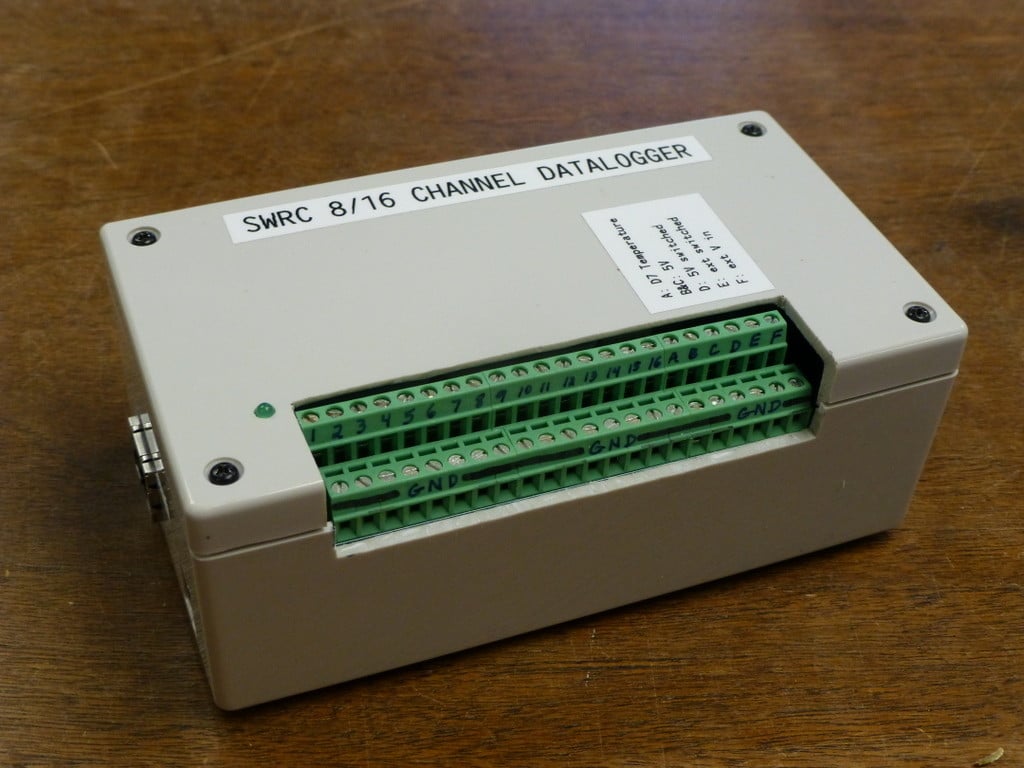-
Shannon Hicks wrote a new post 9 years, 9 months ago
A few months ago I was asked by a researcher here at the Stroud Water Research Center to come up with an automated way to measure the voltage of 8 fuel cells. The cells need to be electrically isolated from each […]

 Welcome to EnviroDIY, a community for do-it-yourself environmental science and monitoring. EnviroDIY is part of WikiWatershed, an initiative of Stroud Water Research Center designed to help people advance knowledge and stewardship of fresh water.
Welcome to EnviroDIY, a community for do-it-yourself environmental science and monitoring. EnviroDIY is part of WikiWatershed, an initiative of Stroud Water Research Center designed to help people advance knowledge and stewardship of fresh water. New to EnviroDIY? Start here

Hey nice article. Thanks for posting.
I’m curious – what sort of target voltages where you measuring and what measurement accuracy where you looking for? and over what temperature range. ?
The ADS1015 ADC has a programmable gain so I since I was looking at signals I knew were below 2v, I used the GAIN_TWO setting to give me a range of +/-2.048V. You can select anything from a gain of two-thirds to 16, which is a range of around 6v (but realistically Vcc of 5v for an Uno) down to 0.25v.
For accuracy, the error is supposedly less than one LSB and very stable across the -40 to 120 degree operating range. Years ago I found that the Arduino’s on-board ADC is horribly inaccurate during either extremely hot or cold temperatures in the dataloggers we deployed outside, so we started using the ADS1015 in all of our loggers and have been extremely happy with their performance.
The ADS1015 ADC has a programmable gain so I since I was looking at signals I knew were below 2v, I used the GAIN_TWO setting to give me a range of +/-2.048V. You can select anything from a gain of two-thirds to 16, which is a range of around 6v (but realistically Vcc of 5v for an Uno) down to 0.25v.
For accuracy, the error is supposedly less than one LSB and very stable across the -40 to 120 degree operating range. Years ago I found that the Arduino’s on-board ADC is horribly inaccurate during either extremely hot or cold temperatures in the dataloggers we deployed outside, so we started using the ADS1015 in all of our loggers and have been extremely happy with their performance.
Nice – The ADS1015 handles a lot.
A lot of onboard ADCs need careful looking at – they are improving.
Numbers need confidence/traceability analysis, the errors typically need all adding, the Vref error, temperature drift error across temperature range, the ADC error, and then any external circuitry – so that was why I was curious as to how you were checking it out.
I’m on the Nerds4Natrure.org Maker Fair San Mateo May15 and going to be showing/discussing errors and traceability for depth measuring sensors
http://blog.nerdsfornature.org/post/115703686099/nature-nerds-maker-faire-2015